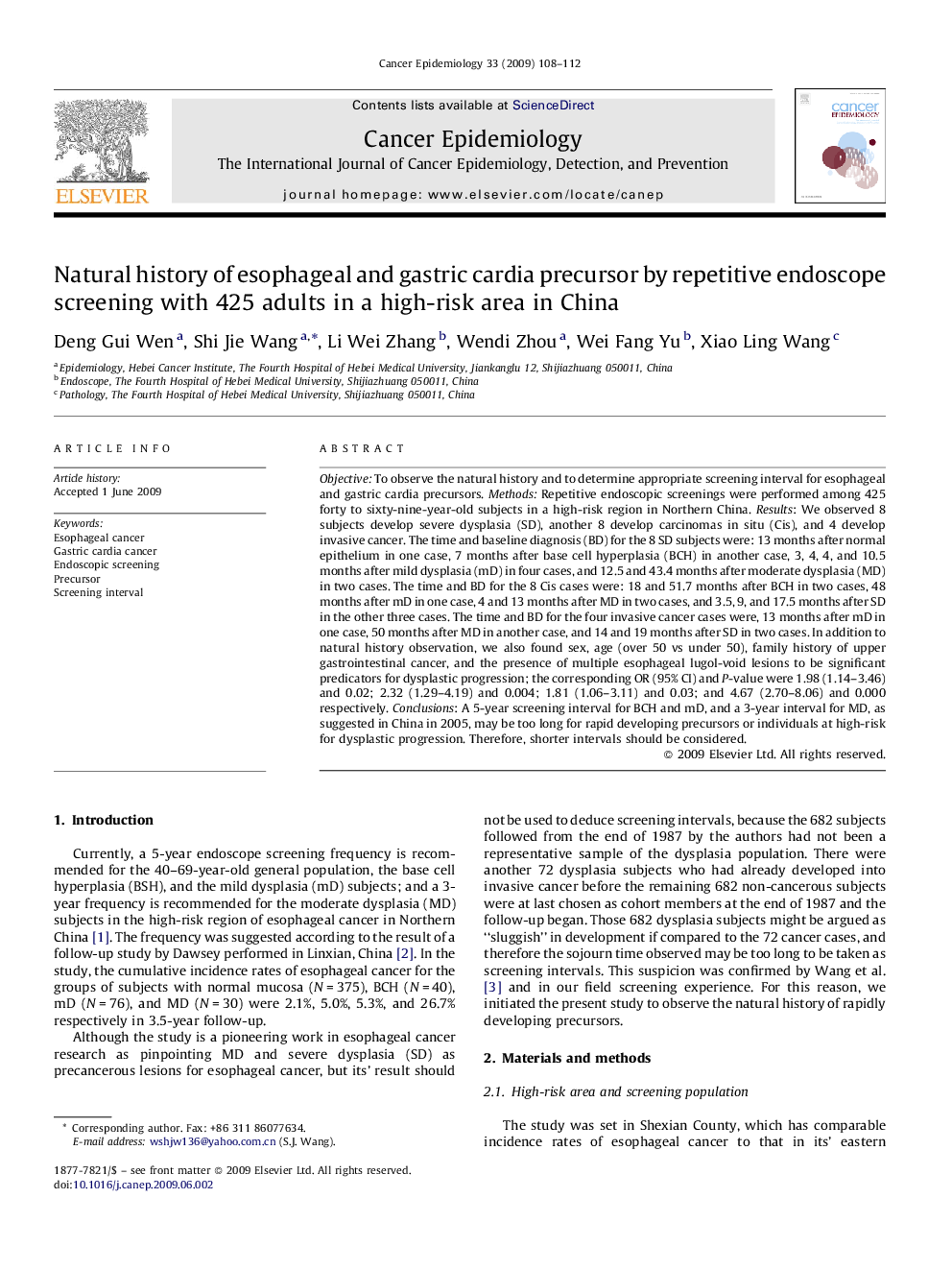| کد مقاله | کد نشریه | سال انتشار | مقاله انگلیسی | نسخه تمام متن |
|---|---|---|---|---|
| 2109470 | 1083876 | 2009 | 5 صفحه PDF | دانلود رایگان |
عنوان انگلیسی مقاله ISI
Natural history of esophageal and gastric cardia precursor by repetitive endoscope screening with 425 adults in a high-risk area in China
دانلود مقاله + سفارش ترجمه
دانلود مقاله ISI انگلیسی
رایگان برای ایرانیان
کلمات کلیدی
موضوعات مرتبط
علوم زیستی و بیوفناوری
بیوشیمی، ژنتیک و زیست شناسی مولکولی
تحقیقات سرطان
پیش نمایش صفحه اول مقاله

چکیده انگلیسی
Objective: To observe the natural history and to determine appropriate screening interval for esophageal and gastric cardia precursors. Methods: Repetitive endoscopic screenings were performed among 425 forty to sixty-nine-year-old subjects in a high-risk region in Northern China. Results: We observed 8 subjects develop severe dysplasia (SD), another 8 develop carcinomas in situ (Cis), and 4 develop invasive cancer. The time and baseline diagnosis (BD) for the 8 SD subjects were: 13 months after normal epithelium in one case, 7 months after base cell hyperplasia (BCH) in another case, 3, 4, 4, and 10.5 months after mild dysplasia (mD) in four cases, and 12.5 and 43.4 months after moderate dysplasia (MD) in two cases. The time and BD for the 8 Cis cases were: 18 and 51.7 months after BCH in two cases, 48 months after mD in one case, 4 and 13 months after MD in two cases, and 3.5, 9, and 17.5 months after SD in the other three cases. The time and BD for the four invasive cancer cases were, 13 months after mD in one case, 50 months after MD in another case, and 14 and 19 months after SD in two cases. In addition to natural history observation, we also found sex, age (over 50 vs under 50), family history of upper gastrointestinal cancer, and the presence of multiple esophageal lugol-void lesions to be significant predicators for dysplastic progression; the corresponding OR (95% CI) and P-value were 1.98 (1.14-3.46) and 0.02; 2.32 (1.29-4.19) and 0.004; 1.81 (1.06-3.11) and 0.03; and 4.67 (2.70-8.06) and 0.000 respectively. Conclusions: A 5-year screening interval for BCH and mD, and a 3-year interval for MD, as suggested in China in 2005, may be too long for rapid developing precursors or individuals at high-risk for dysplastic progression. Therefore, shorter intervals should be considered.
ناشر
Database: Elsevier - ScienceDirect (ساینس دایرکت)
Journal: Cancer Epidemiology - Volume 33, Issue 2, August 2009, Pages 108-112
Journal: Cancer Epidemiology - Volume 33, Issue 2, August 2009, Pages 108-112
نویسندگان
Deng Gui Wen, Shi Jie Wang, Li Wei Zhang, Wendi Zhou, Wei Fang Yu, Xiao Ling Wang,